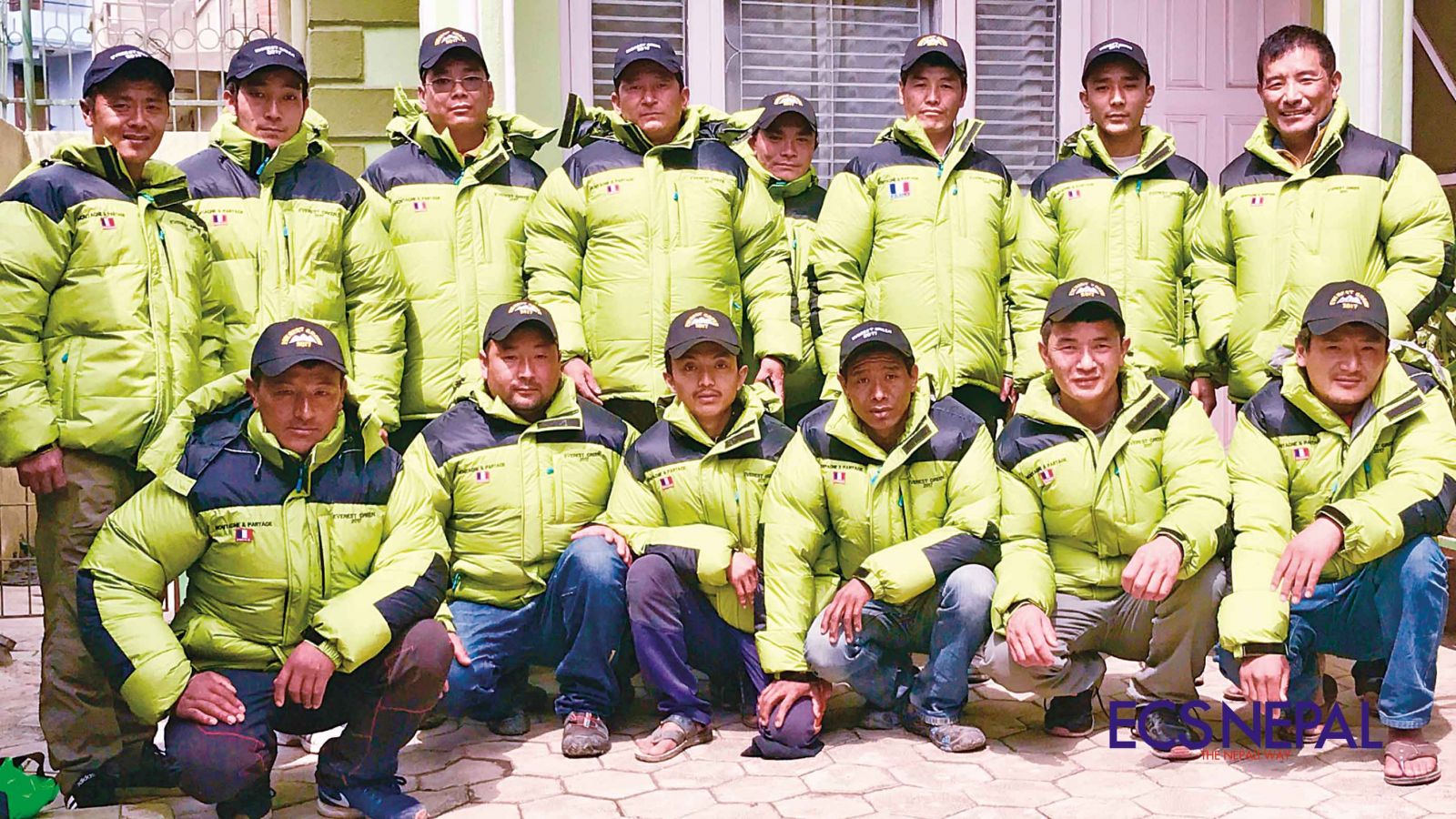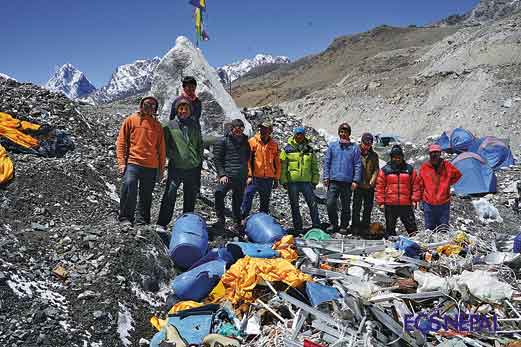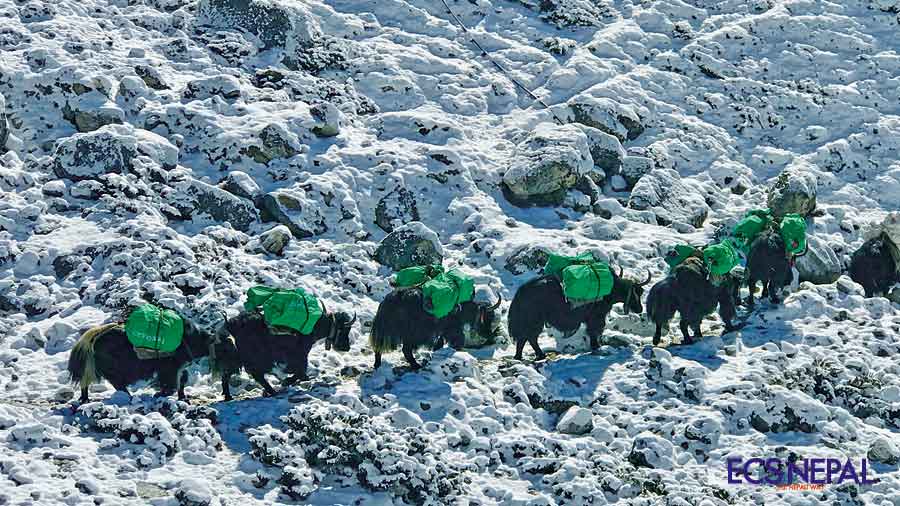An expedition has been hard at work to clean up the tallest mountain in the world.
An expedition with the stated goal of not just climbing but cleaning up? It sounds like a novelty, but considering the circumstances, it would be nice if it became the new “normal.”
I’m not sure when I first began to hear about Everest’s trash problem, but it was years ago now. Unfortunately, in the ensuing time span, it’s only gotten worse: recently it’s even been called “the world’s highest garbage dump.” At first, it might seem hard to understand why—at least it was for me. It was only when I came to learn a little bit more about the practical details and minutiae involved in mountaineering that I began to get a clearer picture of the tremendous amount of stuff that is carried up by a climbing expedition, and how little of it makes it back down again. This is understandable, in a way. These people are in a life-and-death situation. Often, they are struggling to make the return trip down the mountain to safety; anything that isn’t needed just gets left behind. The problem, however, is what happens when there are so many climbing groups and this becomes a regular occurrence.

This year, nearly 450 people have summited Everest during the spring climbing season alone. And, that’s not even counting those that did not succeed in summiting, but climbed part way. There’s also support staff members to consider. All in all, it adds up to a lot of expeditions, a lot of people, and consequently, a lot of trash. By some estimates, the Everest Base Camp area sees up to 35,000 people during a typical spring climbing season. Those are some pretty amazing figures, and the concentration of so many people in one place just adds to the complexity of the situation.
When I met Gérard Clermidy, the first thing I noticed was his enthusiasm and the specificity he employed when speaking about the situation of garbage on Mount Everest. He and his “Everest Green” team have just returned from what I can only call a “trash collection expedition.”Altogether on the trip they removed over five tons of garbage from the mountain. Two tons were then burned in the incinerator at Namchhe Bazaar—something that Gérard Clermidy would like to find a better alternative to in future, but necessary this time—and the remaining three tons are currently en route to recycling facilities in India. I admire their commitment to not just bringing down the garbage, but removing it from the area and from circulation altogether, making it a truly “green” mission that doesn’t add to the burden of the waste that already needs to be disposed of in the cities.

This just-completed cleaning expedition cost a total of 150,000 euros; it was funded entirely by Mr. Clermidy’s association, Montagne en Partage. This French organization’s name roughly translates as “Mountains and Sharing” and has been active in other social projects here in Nepal, as well, over the past several years.
After his speech, during which he presented his expedition’s flag to the French Ambassador, H.E. Mr Yves Carmona, I had the chance to speak to Gérard Clermidya bit more. As I asked questions, I learned something else that surprised and impressed me: despite numerous trips to Nepal over many years and his clear passion for the mountains in general, and Mt. Everest in particular, he has not climbed the mountain himself. “That is not my ethos,” he told me. Cleaning it up is just something he feels called to do—this is the symbol of the country, he told me. It should be clean.

There is a selflessness in this action, from the way I see it. He wants this wonderful symbol of Nepal to continue to be a place that will be unspoiled and worth visiting by many in the years and decades to come.
It is interesting to note that since 2014 the government of Nepal has required expeditions to bring down the trash they’ve brought up with them—to the tune of eight kilograms per person. This is certainly an admirable first step, though it’s unclear if and how it can be monitored, considering the challenging circumstances involved.

Montagne en Partage’s Everest Green expedition is not the first to do this, of course. In 2011, the ‘Saving Mount Everest 2011’ team gathered over eight tons of garbage from the mountain, some of which was used to make an art exhibit to draw attention to the problem. With the French team also involved now, hopefully, expeditions like this will become more and more prevalent, and regular expeditions will also become active by bringing down the trash they generate.
“I wish we could do more. If we had more money, we could,” Gérard Clermidy said during the Q&A session after the expedition’s presentation at the Alliance Francaise de Katmandou on May 30, 2017.
“Give me $500,000 and 30 good Sherpas, and in three years we can have a clean Mount Everest.” Quite a claim, and quite an offer; he seems to have both the skills and the will. Here’s hoping that someone takes him up on it. Future generations will be grateful for any effort to keep this wonderful mountain, and indeed the whole area, trash-free, green, and pleasant both now and into the future.











